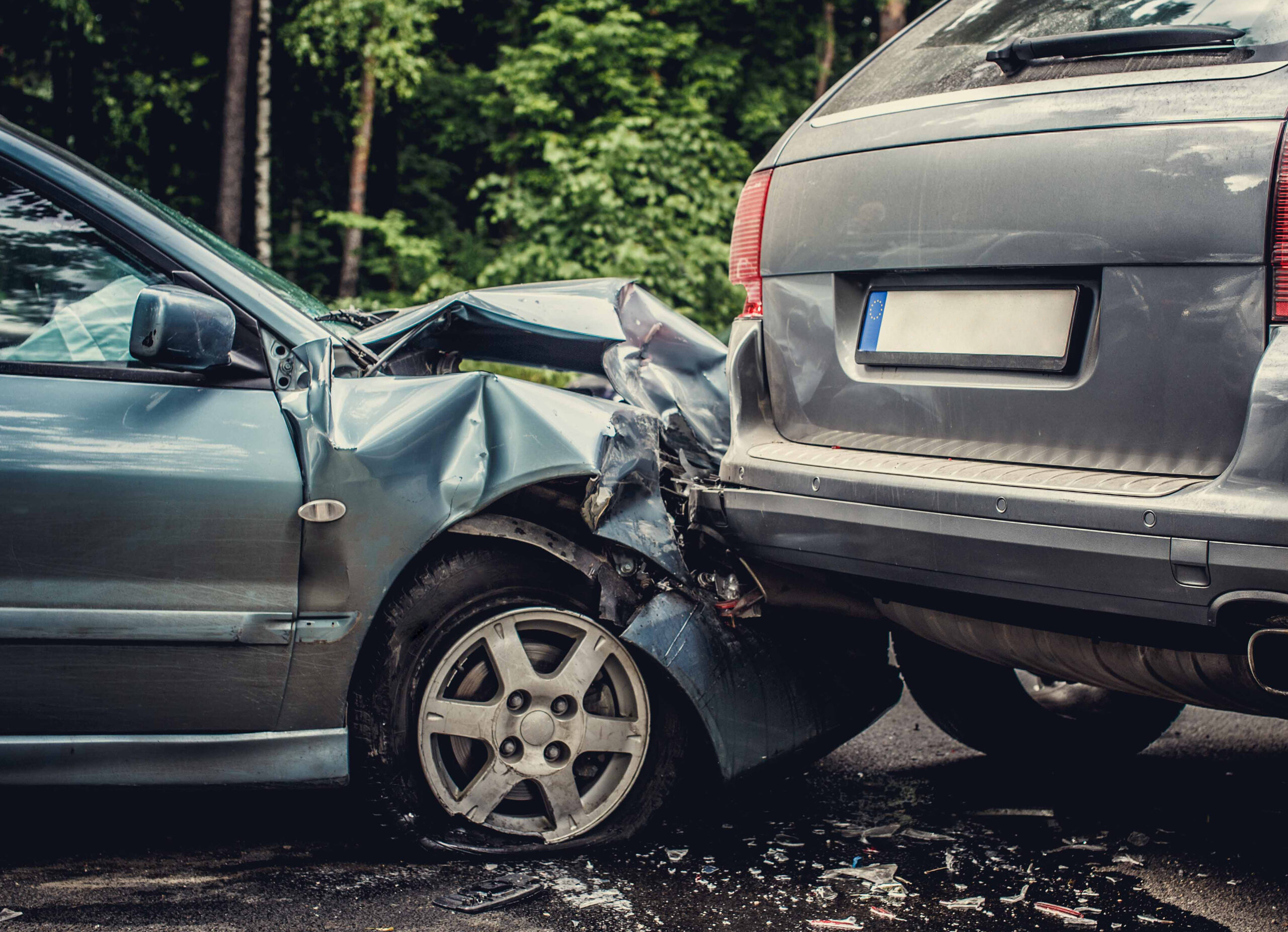Specialized Pedestrian Accident Lawyer: Steps to Obtain Justice and Maximum Compensation
When a pedestrian accident occurs, victims face not only physical injuries and emotional trauma but also complex legal challenges that can feel overwhelming. The path to justice and fair compensation requires specialized knowledge, strategic planning, and dedicated advocacy that only experienced pedestrian accident lawyers can provide. Understanding the critical role these legal professionals play in protecting your rights and maximizing your recovery is essential for anyone who has been injured in a pedestrian-vehicle collision.
Pedestrian accidents often result in catastrophic injuries due to the inherent vulnerability of individuals on foot when struck by motor vehicles. The physical, emotional, and financial consequences can be life-altering, making it crucial to have skilled legal representation that understands the unique challenges these cases present. From navigating insurance company tactics to building compelling evidence of negligence, a specialized attorney serves as your strongest advocate in the pursuit of justice.
The Essential Role of the Attorney
Navigating the Overwhelming Claims Process
The aftermath of a pedestrian accident brings numerous challenges that extend far beyond physical recovery. Insurance companies often approach victims with settlement offers that appear generous at first glance but frequently fall short of covering the full extent of damages and losses. The temptation to accept the first offer from insurance companies is natural, especially when facing mounting medical bills and lost income, but this decision can have devastating long-term consequences.
Insurance adjusters are trained professionals whose primary responsibility is to minimize payouts for their companies. They may use various tactics to pressure victims into quick settlements before the full extent of injuries becomes apparent or before victims understand their legal rights. These early offers rarely account for future medical expenses, ongoing rehabilitation costs, permanent disabilities, or the long-term impact on earning capacity.
A specialized pedestrian accident lawyer understands these tactics and serves as a buffer between victims and insurance companies. They ensure that no settlement discussions occur until a complete assessment of damages has been conducted, including consultation with medical professionals about long-term prognosis and treatment needs. This protection is invaluable during a vulnerable time when victims are focused on recovery rather than legal strategy.
Protecting the Right to Fair Compensation
Personal injury attorneys specializing in pedestrian accidents stand firmly on the side of their clients, dedicating their expertise to building convincing cases that accurately reflect the full scope of damages suffered. This advocacy extends beyond simple negotiation to encompass comprehensive case development that anticipates and addresses potential challenges or defense strategies.
The attorney’s role involves meticulous documentation of every aspect of the accident and its consequences, from the immediate medical treatment to the long-term impact on quality of life. They work closely with medical professionals, accident reconstruction specialists, and economic experts to build a compelling narrative that demonstrates both liability and the full extent of damages.
This comprehensive approach ensures that victims receive compensation that truly reflects their losses rather than settling for amounts that may seem adequate in the short term but prove insufficient as the full impact of injuries becomes apparent over time.
The Eight Advantages of Legal Representation
Explanation of Laws, Regulations, and Deadlines (Reason 1)
The legal landscape surrounding pedestrian accidents involves complex state and local laws, personal injury statutes, and insurance regulations that can be bewildering for individuals without legal training. Attorneys specializing in this area possess intimate knowledge of these legal frameworks, sparing clients from having to conduct extensive research during their recovery period.
One of the most critical aspects of legal representation is understanding and adhering to statutory deadlines. For example, Florida Statutes § 95.11 establishes a two-year statute of limitations for personal injury claims, meaning victims have a limited window to file their cases. Missing these deadlines can result in permanent loss of the right to seek compensation, regardless of how strong the case might be.
Attorneys also understand the nuances of comparative negligence laws, which can significantly impact the amount of compensation available. They know how to navigate local traffic ordinances, pedestrian right-of-way rules, and municipal regulations that may affect liability determinations. This expertise proves invaluable in building strong cases and avoiding procedural pitfalls that could compromise claims.
The complexity of insurance regulations adds another layer of legal knowledge that attorneys bring to each case. They understand policy limits, coverage exclusions, and the various types of insurance that may apply to pedestrian accident cases, including auto liability, uninsured motorist coverage, and personal injury protection benefits.
Documentation of Negligence and Liability (Reason 2)
Establishing negligence and liability in pedestrian accident cases requires thorough investigation and evidence gathering that goes far beyond what most individuals can accomplish on their own. Attorneys have the resources, experience, and legal authority to conduct comprehensive investigations that uncover all relevant facts and evidence.
The process begins with securing key evidence that might otherwise be lost or destroyed. This includes obtaining official police reports, which provide crucial initial documentation of the accident scene, witness statements, and preliminary findings about fault. However, experienced attorneys understand that police reports represent just the starting point of their investigation.
Witness statements require careful collection and documentation, as memories fade over time and witnesses may become difficult to locate. Attorneys know how to conduct effective witness interviews that elicit detailed, useful information while ensuring statements are properly documented for potential use in litigation.
Medical records form another crucial component of evidence collection, documenting not only immediate injuries but also ongoing treatment needs and prognosis. Attorneys work with medical providers to ensure complete documentation while also identifying potential future medical needs that should be included in damage calculations.
Physical evidence from the accident scene, including vehicle damage, road conditions, traffic signal timing, and any available video footage, requires prompt collection and analysis. Attorneys have relationships with accident reconstruction specialists who can preserve and analyze this evidence to create compelling presentations of how accidents occurred.
Maximizing Compensation (Reason 3)
The process of documenting damages in pedestrian accident cases requires comprehensive analysis that accounts for both immediate and long-term consequences of injuries. Experienced attorneys understand how to calculate and present damages in ways that ensure clients receive full compensation for all losses, both economic and non-economic.
Medical expenses represent the most obvious category of damages, but they extend far beyond immediate treatment costs. Attorneys work with medical professionals to understand ongoing treatment needs, potential complications, and the likelihood of future surgeries or interventions. This forward-looking approach ensures that settlement agreements or court awards account for the full medical trajectory rather than just current expenses.
Lost income calculations involve more than simply multiplying current wages by time missed from work. Attorneys analyze earning capacity, career progression potential, and the impact of injuries on future earning ability. For severe injuries that result in permanent disability or career changes, this analysis becomes particularly complex and valuable.
Pain and suffering damages represent some of the most significant compensation available in pedestrian accident cases, but they also present the greatest challenge in terms of calculation and presentation. Attorneys use various methods to quantify these non-economic damages, drawing upon their experience with similar cases and understanding of how juries typically evaluate such claims.
Managing Communications with Insurance Companies (Reason 4)
Insurance companies employ sophisticated strategies designed to minimize payouts, and they begin implementing these tactics from the moment they learn about accidents. Having an attorney manage all communications with insurance adjusters protects victims from making inadvertent statements that could damage their claims while ensuring that all interactions serve the client’s best interests.
Insurance adjusters may seem helpful and sympathetic, but their training focuses on gathering information that can be used to reduce or deny claims. They may ask seemingly innocent questions designed to elicit admissions of fault or downplay the severity of injuries. Attorneys understand these tactics and can navigate conversations in ways that protect clients’ interests.
The negotiation process requires specialized skills and knowledge of insurance company practices. Attorneys know how to present claims in ways that maximize the likelihood of fair settlement offers while also preparing for the possibility of litigation if negotiations fail. Their experience with similar cases provides valuable insight into what constitutes reasonable settlement ranges and when offers should be accepted or rejected.
Access to Experts and Resources (Reason 5)
Complex pedestrian accident cases often require testimony and analysis from various expert witnesses who can provide specialized knowledge that strengthens claims. Attorneys have established relationships with qualified experts in multiple fields, ensuring that clients benefit from the most credible and effective expert testimony available.
Accident reconstruction specialists can analyze physical evidence, vehicle damage patterns, and environmental factors to provide scientific analysis of how accidents occurred. Their testimony can be crucial in establishing fault, particularly in cases where liability is disputed or where multiple factors contributed to accidents.
Medical experts provide essential testimony about the nature and extent of injuries, treatment needs, and long-term prognosis. In cases involving severe injuries, multiple medical specialists may be needed to address different aspects of clients’ conditions and their impact on future quality of life.
Economic experts calculate the financial impact of injuries, including lost earning capacity, increased living expenses due to disabilities, and the cost of future care needs. Their analysis provides concrete financial foundations for damage claims that might otherwise seem speculative or excessive to insurance companies or juries.
Navigation of the Litigation Process (Reason 6)
When settlement negotiations fail to produce fair offers, the litigation process becomes necessary to pursue justice through the court system. This complex legal process involves numerous procedural requirements, deadlines, and strategic decisions that require experienced legal guidance to navigate successfully.
The complaint filing process requires careful drafting that adequately alleges all legal theories while avoiding potential procedural defects that could delay or compromise cases. Attorneys understand how to structure complaints that withstand initial challenges while preserving maximum flexibility for case development as litigation proceeds.
Preliminary motions and discovery processes involve sophisticated legal strategies that can significantly impact case outcomes. Attorneys know how to use these tools effectively while also responding to defense strategies designed to weaken plaintiffs’ positions or delay resolution.
Trial preparation and courtroom representation require specialized skills that distinguish experienced litigators from general practice attorneys. The ability to present complex medical and technical evidence in ways that resonate with juries can make the difference between inadequate awards and compensation that truly reflects the magnitude of losses suffered.
Stress Reduction (Reason 7)
The period following a serious pedestrian accident should be focused on physical healing and emotional recovery, not on navigating complex legal processes and insurance company negotiations. Having experienced legal representation allows victims to concentrate on their recovery while knowing that their legal interests are being professionally managed.
The psychological burden of managing a legal claim while dealing with serious injuries can impede the healing process and add unnecessary stress during an already difficult time. Attorneys handle all aspects of claim management, from initial paperwork to final resolution, allowing clients to focus on what matters most – getting better.
Family members also benefit from this stress reduction, as they can focus on supporting their loved one’s recovery rather than trying to understand legal procedures or negotiate with insurance companies. This family focus on healing rather than legal management often contributes to better overall recovery outcomes.
Contingency Fee Arrangements (Reason 8)
Most pedestrian accident attorneys work on contingency fee arrangements, which eliminate upfront financial barriers that might otherwise prevent injured individuals from accessing quality legal representation. Under these arrangements, attorneys only receive payment if they successfully recover compensation for their clients, aligning attorney and client interests in pursuing maximum recovery.
This fee structure makes experienced legal representation accessible to individuals regardless of their financial situation, ensuring that insurance companies cannot take advantage of victims who cannot afford to hire attorneys. The contingency arrangement also motivates attorneys to work diligently toward the best possible outcomes, as their compensation depends on successful case resolution.
The contingency fee typically covers all case expenses, including expert witness fees, court costs, and investigation expenses, further reducing the financial burden on clients during their recovery period. This comprehensive approach ensures that cases receive necessary resources regardless of clients’ ability to pay ongoing expenses.
Understanding Causes and Serious Injuries
Common Causes of Pedestrian Accidents
Driver distraction represents one of the most significant contributing factors to pedestrian accidents in today’s technological environment. The proliferation of smartphones, GPS devices, and in-vehicle entertainment systems has created numerous opportunities for drivers to become distracted at critical moments when pedestrians are present.
Texting while driving, phone conversations, and GPS navigation adjustments often occur at intersections and crosswalks where pedestrians are most vulnerable. These distractions can prevent drivers from noticing pedestrians who have the right of way or who are crossing legally within designated areas.
Excessive speed and reckless driving create scenarios where drivers cannot react appropriately to pedestrian presence, even when pedestrians are clearly visible and following traffic laws. Higher speeds also increase the severity of injuries when collisions occur, often transforming what might have been minor injuries into life-threatening trauma.
Failure to yield right of way at crosswalks and traffic signals represents a fundamental violation of traffic laws that puts pedestrians at serious risk. Many drivers fail to come to complete stops at red lights or stop signs, endangering pedestrians who are crossing with proper signals.
Driving under the influence of drugs or alcohol significantly impairs driver judgment, reaction time, and ability to perceive pedestrians. Intoxicated drivers may fail to see pedestrians entirely or may be unable to take appropriate evasive action when pedestrians are spotted.
Nature of Damages and Injuries
The physics of pedestrian-vehicle collisions create inherently dangerous situations where individuals with no external protection face impacts from vehicles weighing thousands of pounds. This fundamental disparity in size and protection often results in severe, life-altering injuries even in relatively low-speed collisions.
Traumatic brain injuries represent some of the most serious consequences of pedestrian accidents, often occurring when victims’ heads strike vehicle surfaces or pavement during impacts. These injuries can result in permanent cognitive impairment, personality changes, and the need for lifelong medical care and supervision.
Spinal cord injuries and paralysis can occur when the force of impact damages the delicate structures that control movement and sensation. These injuries often require extensive rehabilitation, adaptive equipment, and significant modifications to living situations, creating substantial long-term financial burdens.
Fractures in pedestrian accident cases often involve multiple bones and may require surgical intervention, metal implants, and extended rehabilitation periods. Compound fractures and damage to joints can result in permanent limitations in mobility and function.
Internal injuries may not be immediately apparent but can be life-threatening if not promptly diagnosed and treated. These injuries often require emergency surgery and intensive medical care, contributing to substantial medical expenses and extended recovery periods.
Wrongful death unfortunately represents a possible outcome in severe pedestrian accidents, creating additional legal challenges for surviving family members who must navigate both their grief and complex legal proceedings to seek justice and financial security.
Due Compensation and Legal Deadlines
Types of Recoverable Compensation
General damages encompass the physical and mental injuries suffered as a result of accidents, including pain and suffering that may continue long after initial medical treatment is completed. These damages recognize that the impact of serious injuries extends beyond medical bills to include ongoing discomfort, emotional distress, and diminished quality of life.
The calculation of pain and suffering damages requires careful documentation of how injuries have affected victims’ daily lives, relationships, and ability to enjoy activities they previously found meaningful. Attorneys work with clients to document these impacts comprehensively, ensuring that settlement negotiations or jury presentations accurately reflect the full scope of non-economic losses.
Special damages represent the quantifiable financial losses resulting from accidents, including all medical expenses from initial emergency treatment through ongoing rehabilitation and future medical needs. These calculations must account for inflation, potential complications, and the lifetime cost of managing chronic conditions or disabilities.
Lost wages extend beyond immediate income loss to include diminished earning capacity, missed promotion opportunities, and the inability to pursue career advancement. For individuals whose injuries prevent them from returning to their previous occupations, retraining costs and the difference in earning potential become significant factors in damage calculations.
Long-term care needs may include home modifications, assistive devices, personal care assistance, and ongoing therapy services. These expenses can accumulate to substantial amounts over a lifetime, making accurate calculation essential for ensuring adequate compensation.
Statute of Limitations
The statute of limitations creates firm deadlines for filing legal claims, and these deadlines vary significantly between states, making knowledge of local laws crucial for protecting legal rights. For example, Washington state allows three years for personal injury claims, while Oregon provides only two years from the date of injury.
These time limits are generally strictly enforced by courts, meaning that even strong cases with clear liability and substantial damages can be permanently barred if not filed within the prescribed time periods. The complexity of these rules makes early consultation with an attorney essential for ensuring that all deadlines are met.
Certain circumstances may affect the calculation of limitation periods, such as cases involving minors, individuals with mental incapacities, or situations where injuries are not immediately apparent. Understanding these exceptions requires specialized legal knowledge that highlights the importance of prompt legal consultation following any pedestrian accident.
Crucial First Steps After the Accident
Priority on Health
Seeking immediate medical attention represents the most important step following any pedestrian accident, even when injuries appear minor or when adrenaline masks the severity of trauma. Many serious injuries, including internal bleeding, concussions, and spinal damage, may not produce obvious symptoms immediately but can be life-threatening if not promptly treated.
Emergency medical evaluation provides essential documentation of injuries that becomes crucial evidence in legal proceedings. Medical records created immediately after accidents carry significant weight in establishing the causal relationship between accidents and injuries, making prompt treatment important for both health and legal reasons.
Some injuries, particularly traumatic brain injuries and internal trauma, may have delayed onset of symptoms that only become apparent hours or days after accidents occur. Early medical evaluation can identify these conditions before they become critical, potentially preventing complications that could worsen prognosis and recovery outcomes.
Documentation and Police Reports
Reporting accidents to police ensures that official documentation is created while evidence is fresh and witnesses are still available. Police reports provide objective third-party documentation of accident circumstances, which can be invaluable when insurance companies or opposing attorneys attempt to dispute facts or shift blame.
The official accident report typically includes officer observations about road conditions, traffic control devices, vehicle damage, and initial statements from involved parties and witnesses. This contemporaneous documentation often proves more reliable than testimony provided months or years later during litigation proceedings.
Collecting witness contact information at the accident scene ensures that their testimony remains available for case development. Witnesses may provide crucial information about driver behavior, traffic conditions, or accident sequence that supports liability claims and contradicts defense arguments.
Photographic evidence of the accident scene, vehicle damage, and visible injuries provides powerful visual documentation that can significantly enhance case presentations. These images should be taken from multiple angles and include wide shots showing the overall scene as well as close-up detail photos of specific damage or conditions.
Immediate Legal Consultation
Contacting an attorney for a free case evaluation immediately after an accident ensures that legal rights are protected from the outset and that crucial evidence preservation begins promptly. Many attorneys offer free consultations for pedestrian accident cases, allowing victims to understand their rights and options without financial commitment.
Early legal involvement can prevent common mistakes that might compromise claims, such as providing recorded statements to insurance companies or signing documents without understanding their implications. Attorneys can also ensure that all relevant insurance policies are identified and that proper notice is provided to all potentially liable parties.
The initial consultation process allows attorneys to assess case strengths and potential challenges while beginning the evidence preservation process that may be crucial for successful case resolution. This early involvement often proves invaluable in building strong cases that achieve maximum compensation for injured pedestrians and their families.
Working with a Pedestrian Accident Lawyer – Capital …
How To Choose The Best Pedestrian Accident Attorney – Forbes




